“NieR:Automata Ver1.1a”: Producer Opens Up About Her Passion for the Original Work and How She Poured Her Heart and Soul Into the Anime Adaptation [Part 1 of 2]
2024.08.16

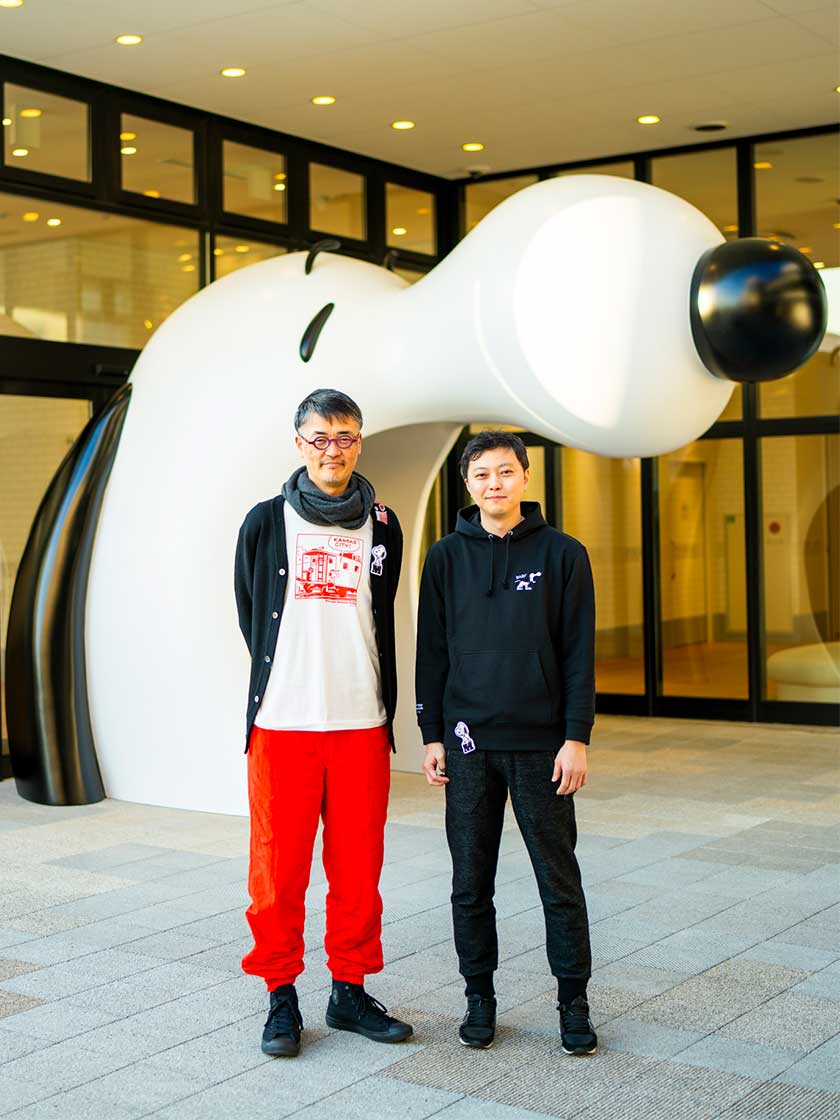
2024.07.31
In the ongoing series “Museum - Where Art and Entertainment Intersect,” we spotlight individuals who create spaces that maximize the appeal of artists and artworks, resonating deeply with viewer’s hearts and minds.
This time, we focus on the “Snoopy Museum Tokyo,” which reopened on February 1st, 2024, after a big renovation. The newly established “Snoopy Wonder Room,” filled with countless Snoopy goods, and the “Snoopy Room” featuring an approximately 8-meter-long giant Snoopy lies, enhanced with visuals, lights, and music, amplify the joy and excitement. Additionally, a special exhibition titled “Traveling Peanuts” which displays mainly precious original comic strips, has also been newly launched.
Leading this renovation project are Daisuke Kusakari, Creative Director of the “Snoopy Museum Tokyo,” and Tatsuya Yoshioka, in charge of LBE (Location Based Entertainment) at Sony Creative Products (SCP), the operator of the Snoopy Museum Tokyo. They will discuss the objectives of the renovation, details of the newly introduced exhibits, and highlight the exhibition features.
In Part 1, we delve into the four key points at the core of the renovation project.
※The original Japanese article appeared on March 10 and 11, 2024.

Daisuke Kusakari
Creative Director, “Snoopy Museum Tokyo”
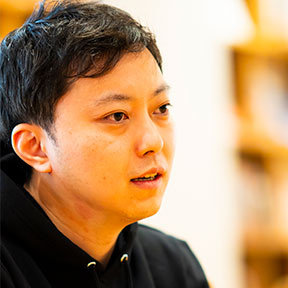
Tatsuya Yoshioka
LBE Producer, Sony Creative Products
The “Snoopy Museum Tokyo” is the world’s only official satellite branch of the “Charles M. Schulz Charles M. Schulz Museum and Research Center,” located in Santa Rosa, California, USA. After opening in Roppongi, Tokyo, from 2016 to 2018, it relocated to Minami-machida Grandberry Park in December 2019.
The permanent exhibition showcases photographs and videos of Charles M. Schulz, creator of “Peanuts,” along with comics and vintage goods related to the characters. It features attractions like the approximately 8-meter-long giant Snoopy statue in the “Snoopy Room” and the large doghouse, “Snoopy's 'Very Happy Home'” drawing considerable attention. The February 2024 renovation introduced the “Snoopy Wonder Room,” filled with Snoopy goods.
Special exhibitions are held every six months, currently featuring “Traveling Peanuts.” Additionally, the facility includes a workshop room and the “Brown’s Store,” offering original merchandise. Adjacent to it, the “PEANUTS Cafe” serves original menu items inspired by the “Snoopy Museum Tokyo.”
──First of all, please tell us about your involvement with the “Snoopy Museum Tokyo.” Mr. Kusakari, you serve as the Creative Director - could you explain specifically what your role entails?
Kusakari: The “Snoopy Museum Tokyo” is a satellite branch of the “Charles M. Schulz Museum and Research Center” in Santa Rosa, California, which houses the works of Charles M. Schulz, the creator of “Peanuts.” Therefore, we borrow original artworks from the “Charles M. Schulz Museum” for our exhibitions.
My role here is to balance exhibition planning with business considerations and steer this museum in a positive direction. I act as the flag-bearer for the “Snoopy Museum Tokyo.”
──And Mr. Yoshioka, what is your role?
Yoshioka: I oversee SCP’s museum business. In addition to the “Snoopy Museum Tokyo,” I also manage other museum businesses like the “Roppongi Museum” and the museum at TODA BUILDING opening in Kyobashi this fall. Regarding the recent renovation of the “Snoopy Museum Tokyo,” I worked closely with Mr. Kusakari and Mr. Miyoshi Nakayama (Director of Snoopy Museum Tokyo) to plan the project’s direction and content.
──The “Snoopy Museum Tokyo” at Minami-machida Grandberry Park opened in December 2019. It’s been over four years already, so why was such a large-scale renovation project undertaken at this time?
Kusakari: Permanent facilities generally start discussing renovations every two to three years, and the “Snoopy Museum Tokyo” was no exception. However, shortly after opening, we were forced to close due to the COVID-19 pandemic, which caused a prolonged period of stagnation.
But Director Nakayama said, “This won’t do,” and from there, we identified current challenges, built the core, branched out, and expanded, working towards the renovation.
──Mr. Yoshioka, you are overseeing SCP’s museum business. How did you perceive the challenges of the “Snoopy Museum Tokyo”?
Yoshioka: I began to be deeply involved with the “Snoopy Museum Tokyo” from February 2023. At that time, the renovation project was already underway. Mr. Kusakari had been considering the direction of how to showcase the “Snoopy Museum Tokyo” and its exhibition contents, while I started with the challenge of enhancing visitor numbers from a business perspective.
──What were some specific challenges identified?
Yoshioka: One clear challenge was the change in our customer base after moving from Roppongi to Minami Machida. During the Roppongi days, our main target was women in their 30s to 50s who loved “Peanuts” characters like Snoopy. However, in Minami Machida, there was an increase in families and visitors arriving by car rather than train.
Also, lifestyle changes after the pandemic meant shopping primarily shifted online, and people became more selective about where they spent their leisure time. As the customer base and their expectations changed in terms of location and experience, adjusting to these changes became a significant business challenge.
──Who are your current target audiences?
Yoshioka: The purpose of the “Snoopy Museum Tokyo” is to get more people to love “Peanuts”. That’s our main mission, and currently, the “Snoopy Museum Tokyo” aims to increase the volume of fans of the comic strip.
When fans of Snoopy hear news of the renovation, they naturally come to visit, but we also aim to be a place where not only passionate fans who love Snoopy but also those who may only know Snoopy but not the original work, or those who are unfamiliar, can enjoy.
Kusakari: Director Nakayama and I often brainstorm strategies based on experience and intuition, thinking, “Wouldn’t it be good to do this?” or “How can we attract these people?” However, Mr. Yoshioka turns those ideas into detailed analyses and presents them as high-resolution marketing information.
Combining both perspectives, we felt that what “Peanuts” fans were seeking was gradually changing. This led us to redefine the very existence of the “Snoopy Museum Tokyo” and recognize the need for renovation.
──After such considerations, you’ve renewed four permanent exhibitions this time. Firstly, the impressive “Snoopy Entrance” featuring a Snoopy with his mouth wide open. Then the “Welcome Snoopy,” where mirrors shaped like clouds on the ceiling greet visitors as if Snoopy and friends were welcoming them. In addition, the newly established “Snoopy Wonder Room” filled with over 1,000 Snoopy goods such as stuffed animals, clothes, and stationery. Plus, the “Snoopy Room” featuring a giant Snoopy statue lies, enhanced with a show using light, video, and music. What concept did you have in mind for these renewal plans?
Kusakari: The initial proposal from Mr. Yoshioka was to create an experience where “being happy and joyful with Snoopy.” Naturally, being a museum, we focused on strengthening our exhibitions while ensuring visitors could experience feelings of happiness and joy through “taking photos together” and “enjoying the abundance of Snoopy.”
Yoshioka: Additionally, I suggested, “Let’s make it fun to frolic around with ‘Peanuts.’” I wanted people to enjoy being here with their families or friends more. Nevertheless, as a branch of the “Charles M. Schulz Museum,” the primary purpose remains to appreciate exhibits such as original artworks. We aimed to maintain this essence while altering external factors.
For instance, the entrance was originally a simple space for queuing, but we transformed it into a place where Snoopy and the “Peanuts” gang greet visitors. Since there was still usable space available, we aimed to make it more enjoyable.
──The key visual for the renewal had the caption “Awakening.” What does this phrase signify?
Kusakari: We chose the caption “Awakening” to express the idea of “changing and evolving.” It wasn’t about transforming but rather awakening the inherent potential that was already there.
──Among the renovations, the “Snoopy Wonder Room” stands out. The numerous Snoopy items on display were donated by fans. How did the idea for this room and the exhibition come about?
Kusakari: To make it worthwhile for people to come all the way here, one of the themes of the renewal was creating exhibitions with significant value that had never been seen before.
The “Snoopy Museum Tokyo” is already very famous among permanent museum types. It has many followers on social media, and compared to other museums and exhibitions I manage, it stands out in terms of recognition. At the same time, we noticed many people saying, “I know about it, but I haven’t been there yet.”
We focused on shaking up the feelings of those who say, “I know about it but haven’t been there.” To achieve this, we needed to create something they had never seen before. From this, the idea for the “Snoopy Wonder Room” was born.
Yoshioka: I recall that initially, we discussed how it’s fun when there are many Snoopy items around. We emphasized the importance of quantity.
Kusakari: Hearing that, it reminded me of the storage at the “Charles M. Schulz Museum.” The object storage at the “Charles M. Schulz Museum” is like a warehouse of numerous vintage “Peanuts”-related goods. When you open drawers, you find dozens of the same dolls lined up, which is quite fascinating.
Moreover, the exhibition method of “showing the warehouse” is also popular in Europe. One notable example is the Museum Boijmans Van Beuningen in Netherlands, which opened in 2021. As part of the museum’s renovation, a massive warehouse called “Depot” was built nearby to temporarily house a vast collection of artworks stored by the museum. Although it’s a warehouse, it’s open to the public, allowing visitors to see numerous artworks stored by the museum, attracting global attention.
Inspired by this approach at the Museum Boijmans Van Beuningen, we wanted to create a room resembling a warehouse. We aimed to fill it with items to the brim. Additionally, we thought it would be interesting if these were donated items filled with memories from fans. This led to the concept of “our museum created by everyone” and further refined the plan for the “Snoopy Wonder Room.”
Yoshioka: To stimulate those who have never been to the “Snoopy Museum Tokyo,” increasing the relevant population was also important. The idea of donating cherished items seemed to fit perfectly. When you donate the stuffed animals which you used or a collection you gathered long ago, it might be displayed. It increases the motivation to visit, feeling like “I am also making the museum.”
──Please explain the process leading up to the completion of the “Snoopy Wonder Room,” such as how fans donated items and the flow until the exhibition.
Yoshioka: Many hurdles had to be overcome to make it happen, such as how to exhibit, what to do with donated items, and so on.
Therefore, after discussions among the staff, we decided to have donors bring their items directly to the “Snoopy Museum Tokyo.” We explained it was uncertain whether we could exhibit all the donated goods. We also proposed to the donors that they entrust us with the disposition of the exhibited goods after the exhibition.
As a result, approximately 500 people donated about 1,700 goods in just two months. From these, along with items we already owned, we selected a total of over 1,000 items to display in the “Snoopy Wonder Room.”
──In the exhibition room, items are displayed by genre, such as in the stuffed animals section and a kitchenware section. I was surprised that they were displayed without being placed in cases.
Kusakari: We were also considered how to treat donated items. We felt that once they were placed in a case, they might instantly look like “products.” While they might seem impressive, they could also appear entirely uninteresting.
So, we decided not to place them in cases but to display them as they were. We also engaged architectural design specialists and discussed while showing them catalogues of old “Peanuts” products. We conveyed that we wanted to create a space with a wide variety of items. The concept was like a warehouse but not a musty storage room; rather, we wanted a positive image. Thus, we proceeded with design planning, verifying the volume of exhibit items, and so on.
──What were the reactions from the “Charles M. Schulz Museum” staff?
Kusakari: They were concerned about how donated items would be handled, but they were very positive about the project itself. “Charles M. Schulz Museum” staff generally view our initiatives in a positive light and always support us wholeheartedly. It’s a very good relationship where we can easily realize various projects.
──Please tell us more about the visuals and music-enhanced productions in the “Snoopy Room.” Originally a room filled with various three-dimensional figures, including a giant Snoopy, set in a stark white space, its appearance has changed with the addition of light, video, and sound effects.
Yoshioka: That’s right. However, initially, we didn’t plan to make it as elaborate as it turned out to be.
To be honest, before the renovation, the most popular spot at the “Snoopy Museum Tokyo” was the third-floor theater room. When we decided to change that space into the “Snoopy Wonder Room,” we were concerned that visitor satisfaction might decrease.
On the other hand, the “Snoopy Room” was a quiet space with a stark white background, so there was a desire to make it a bit more glamorous and enjoyable. That’s where the idea came up to use videos to explain which comics inspired the Snoopy figures placed in the “Snoopy Room.” As we developed this concept further, it evolved into the current show enhancement.
Kusakari: Initially, my idea was to have the Snoopy figures lined up neatly in the white room, and every 5 or 10 minutes, a show similar to a secret live performance would suddenly start. During this show, I envisioned introducing the comics that inspired the Snoopy figures.
However, when we collaborated with the video production company “Robot” and creators, the idea came up to use shadows. Around the same time, I was working with creators skilled in manipulating light and handling lighting equipment. Together, we brainstormed and developed a performance using light and shadows.
Furthermore, during this process, we decided on the key visual and catchphrase “Awakening” for the “Snoopy Museum Tokyo” renovation. The key visual also suggests shadows, and linking it with the video in the “Snoopy Room” clarified the concept. Thus, rather than explaining the comics that inspired the figures, we aimed for a storyline where Snoopy emerges from and disappears into shadows, evoking the main catchphrase “Awakening.”
Yoshioka: The idea of Snoopy emerging from the shadows and running around the “Snoopy Room” was very intriguing. But technically, I wondered if it could really be achieved (laughs).
Kusakari: Exactly. At first glance, it might seem like just shadow play or videos projecting Snoopy images. However, in reality, it involves highly advanced video techniques.
Initially, we tried creating shadows by moving spotlights and projecting them onto the walls, but it didn’t quite work out. So, we combined three elements: the real shadow of the Snoopy figure, shadows created with projectors, and shadows projected onto the walls to create the video.
From a visual and optical perspective, the program is incredibly intricate, and I want to emphasize that (laughs). However, for visitors, I hope they can simply enjoy it without worrying about the technical details. The enhancement plays approximately every 5 minutes, so don’t miss it when you visit!
(To be continued to Part 2)
Text by Yuki Nomoto
Photos by Osamu Hoshikawa
Translated by Yumi Hasegawa
Peanuts and all related titles, logos and characters are trademarks of Peanuts Worldwide LLC
© 2024 Peanuts Worldwide LLC.
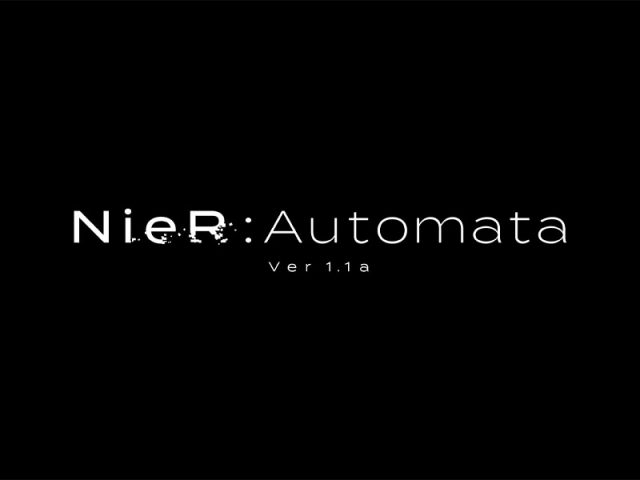
2024.08.16

2024.07.31
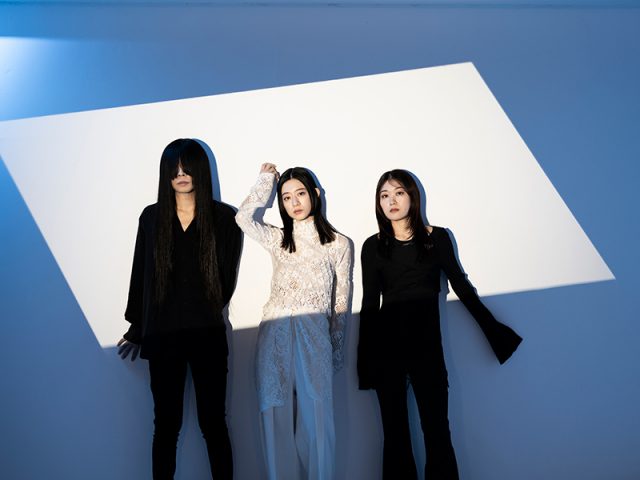
2024.03.05
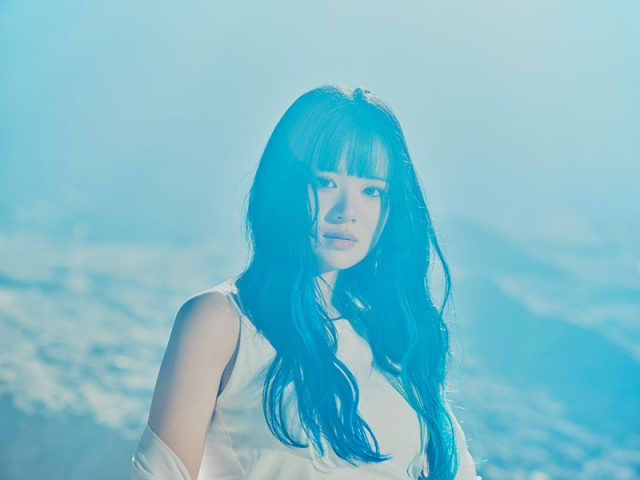
2024.02.16
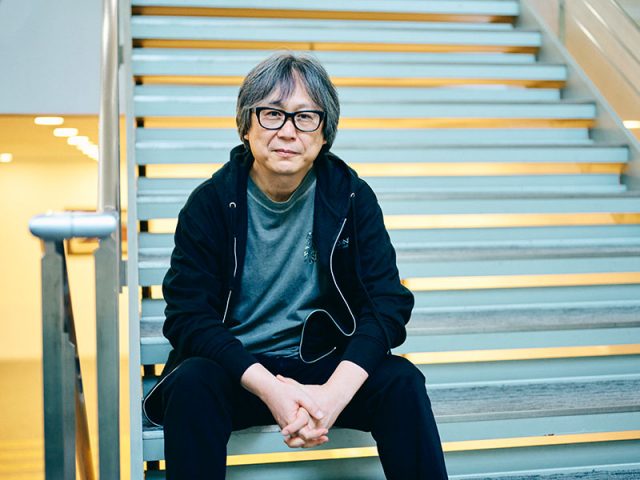
2023.11.15

2023.10.30
Follow the official Sony Music SNS
Get the latest news from Cocotame